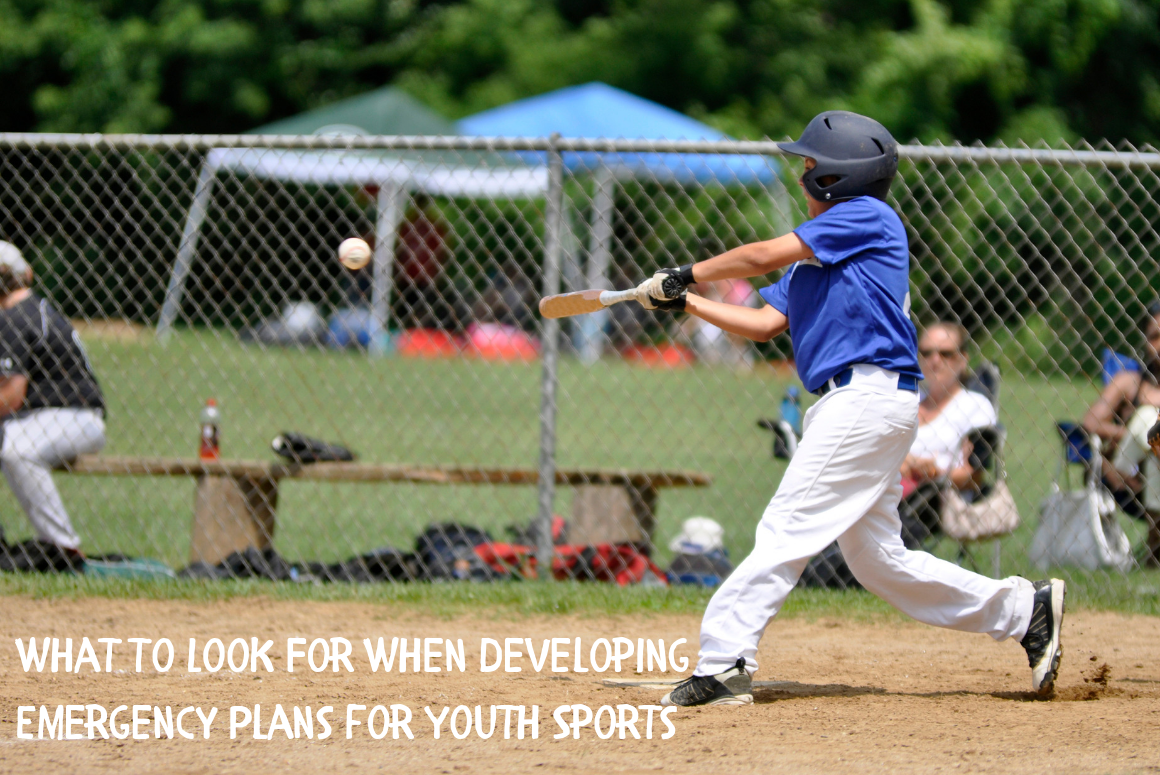Youth sports are a great way for kids to learn team-building skills, make new friends, and stay active regularly. While they’re enjoying everything from soccer and football to hockey and ringette, coaches and team staff are focused on providing a safe environment for them to play in. That’s where developing emergency plans for youth sports comes in handy, and here’s what to look for!
Consider Different Types of Emergencies
Physical injuries come to mind when we think about youth sports – twisted ankles, bumps, bruises, cuts and scrapes. Those are important to plan for but they’re not the only emergency situation to prepare for – ask your staff how you might manage the following:
- Players with existing medical conditions
- Players taking prescription medication(s), either short- or long-term
- Players with allergies (seasonal/environmental, food sensitivities, insect stings, medication)
- Players with previous injuries, like concussions, that need special attention
- Natural disasters like earthquakes, hurricanes, wildfires, or flooding (emergencies that may impact your region as a whole)
- Day-to-day emergencies like a power outage or a bus returning late from a tournament
- A building evacuation or unexpected relocation
Once you have your possibilities, assign them a priority or level of impact, and create specific plans around those that are likely to be the most serious, like an earthquake or a player concussion. This allows you to prepare supplies and processes around them, and for things like building evacuations, staff can implement practice drills so that everyone is familiar with what to do, and ensure they have the right training to support players and other staff.
Provide Training & Supplies
Staff preparedness is key to implementing a complete emergency plan, and there are a few ways they can do so:
- Have staff trained in First Aid, CPR, and AED use – safety managers and coaches are likely to have these as part of their mandatory requirements, but consider getting other staff trained too, like registrars or even parents!
- Ensure your First Aid Kit is up-to-date and fully stocked, and consider creating an emergency kit to complement it – this will have more robust supplies like blankets, food and water supplies, hand-crank radios, matches and candles, etc.
- Establish best practices for injury reporting so that you have complete, comprehensive record-keeping and to prevent future injuries and answer questions.
Collect The Right Information
In order to support your players, it’s vital for you to have information available to proactively prepare, or to respond to an emergency, whether it’s a personal, medical emergency or a widespread community disaster. There are a few key pieces of information that you should collect from players and their families:
- Emergency contact information for parents or alternate guardians (email, telephone number, cellphone number)
- History of past injuries, including concussions and return-to-play protocols
- Health and medical history, including allergies, that might impact their ability to participate in a game or training
- Any medications or treatments that might be required while a player is with the team, either at practice or travelling for an away game or tournament
- Waivers and consents, such as player conduct or consent to treat forms
Once you’ve collected this information, make sure that the right staff know where to access it and can do so easily, especially in an emergency. (Hint: ePACT can help!).
Include A Communication Plan
Communication is key in any emergency so that everyone remains up-to-date as effectively and efficiently as possible. As you collect information from parents, alternate guardians, and emergency contacts consider how you will communicate with them when you need to.
Many organizations rely on phone trees, which are often slow to activate and have challenges when information is incorrect or out-of-date. In the last decade, the internet has become the preferred way to communicate (as well as a source of ongoing information in a crisis) mostly due to the speed at which people can connect with one another.
Be open to using different communications methods, like email, text, or even social media, take the time to learn how to use these to suit your association’s needs, and always have a back-up plan for each method in case something isn’t available in a particular emergency. Be sure to share your communication and emergency plans for youth sports with families and players so they know what to expect in any situation – this also helps ensure that they provide you with accurate contact information and that they keep it updated whenever something like a phone number or emergency contact changes.
If you have additional tips on how to develop emergency plans for youth sports, we’d love to hear from you!
Terms and Conditions
All content provided on this blog is for informational purposes only. The owner of this blog makes no representations as to the accuracy or completeness of any information on this site or found by following any link on this site. The owner will not be liable for any errors or omissions in this information nor for the availability of this information. The owner will not be liable for any losses, injuries, or damages from the display or use of this information. This policy is subject to change at any time.

